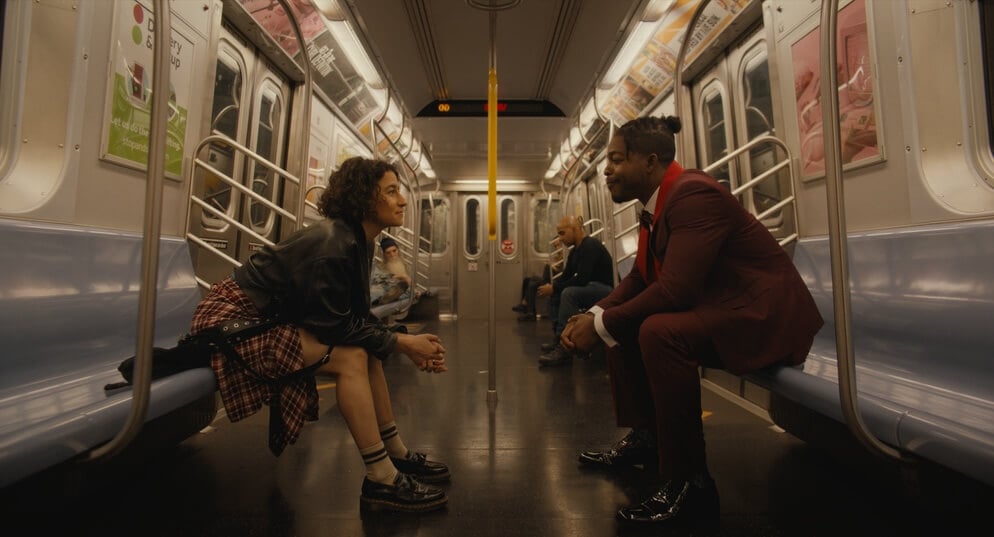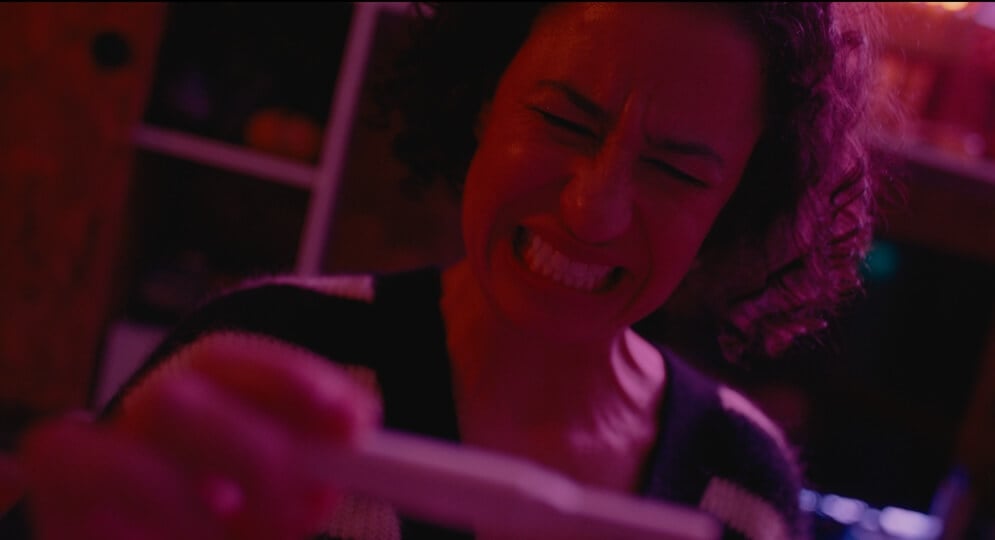Cinematographer Jeffrey Kim on the comedy feature Babes

Directed by Pamela Adlon, Babes is a heartfelt, contemporary comedy set in vibrant New York City. At its core, the movie is about the deep love and strong friendship between Eden (played by co-writer and producer Ilana Glazer) and Dawn (Michelle Buteau). The feature blends humor with deep emotional resonance as the two friends navigate family life and motherhood. With its timeless visual style, the film captures the charm of classic cinema while grounding its narrative in the present day.
The project's distinct look was crafted through the close collaboration of cinematographer Jeffrey Kim and Light Iron colorist Keith Jenson. From preproduction through post, Kim and Jenson worked together to develop a visual language that evokes classic films while navigating a fast-paced production schedule. In this interview, they discuss their creative process, their technical workflow, and how they balanced the film’s emotional core with its comedic elements.
Light Iron: How would you describe the look of Babes?
Jeffrey Kim: In one of our first meetings, director Pamela Adlon told me she wanted the film to feel timeless, like a classic picture that would stand the test of time and age elegantly. We talked about iconic New York films like Annie Hall and When Harry Met Sally, and to me, it felt like Babes should be captured on film. However, given our budget constraints that wasn't feasible. So, when I met with Keith during preproduction, I told him I wanted to develop a show LUT that would help imbue the imagery with that ineffable quality of being captured on 35mm film negative, specifically Kodak Vision2 500T 5218.
Keith Jenson: We used a Kodak film emulation LUT as the basis for the grade. From there, utilizing the look and grading toolsets inside of DaVinci Resolve, we added creative elements like halation, film grain, and contrast curves to achieve the warmth and timelessness Jeffrey wanted for the final product.

How did you first connect and begin working together on this project?
Kim: I had never worked with Light Iron before this project. Of course, their reputation in post production is well known, and their affiliation with Panavision gives them tremendous reach across the film industry. Liz Siegel, a co-producer on the film, had a prior relationship with Light Iron New York and suggested I meet with them during preproduction. I went to their office in SoHo and met the entire team, including Keith. Between Liz's positive experience with Light Iron and the rapport I felt with Keith, I knew it was the right place to bring the project for finishing.
Jenson: Jeffrey requested a shooting LUT for set that he would be able to light through. Three possible options were put together for him to look at and shoot some hair and makeup tests with. When Jeffrey returned with the results and wanted to adjust the LUTs, that's when I was brought into the process. We isolated the LUT he liked the most, made some creative adjustments to it, and exported a Cube LUT for them to use on the dailies and for me to use in the DI once they were done shooting.
Kim: We developed and fine-tuned our film emulation show LUT during prep by putting footage from my camera tests through the entire Light Iron post workflow pipeline and assessing what aspects of the LUT were performing well and what areas needed adjustment. This process gave me the confidence to work free and fast once principal photography began. And because Babes was not a big-budget film, I did not have a DIT as part of my camera department team. I needed to reallocate those resources toward having a second camera because we had massive page counts scheduled every day. The value of a second camera greatly outweighed my need to have the ability to live grade on set and be able to finesse specific looks in the transcodes. At the end of the day, the LUT shined. We made it through a very rigorous principal-photography schedule, and months later, Keith and I sat in the theater on day one of the DI with imagery already in a very good place.
Jeffrey, were there any particular challenges you faced during principal photography that you knew you’d ultimately be able to solve in the color grade?
Kim: Trying to tell a convincing story that spans a full year even though principal photography lasted less than two months. Babes was photographed entirely in the summer, but the story encompasses all four seasons. Keith and I spent a lot of time obsessing over the hue and saturation level of leaves and greenery, making sure they felt seasonally accurate. The color and quality of daylight/sunlight were also a point of emphasis. It's the little details that matter. Audiences subconsciously process these visual cues to help them understand concepts like time and place, and when these details feel off, it undermines the entire project of cinema, which is to create an immersive experience.

Did you collaborate in person for the final grade?
Jensen: The first supervised day, we had Jeff on site and Pamela in LA. We did a look-setting session on day one, and Jeff was present for every day of the final grade after that. He sat next to me in our theater in New York as we dialed-in the P3 look that would be the basis for the entire piece. Once we were nearing the end of that, Pamela and Ilana Glazer came to the theater and we finalized color and did reviews of the completed P3, rec709, and HDR versions of the film.
How important was it that your collaboration was able to begin in advance of principal photography?
Kim: Working with Keith during preproduction was as integral, if not more so, in developing the look of the film as any part of our collaboration during the post-production process.
Babes is a comedy, but emotionally, at its core, it is a film about love and friendship. I wanted that sense of love to be felt in every single frame of the film — with the exception of one scene that leans into horror genre tropes. Warmth was key. Keith and I meticulously dialed-in warmth in just about every shot, always making sure the palette felt naturalistic and tasteful, never heavy-handed.
